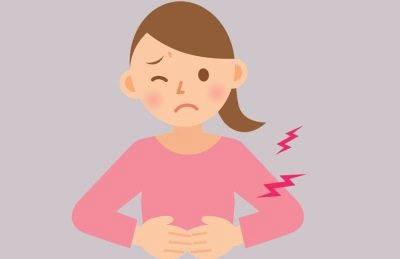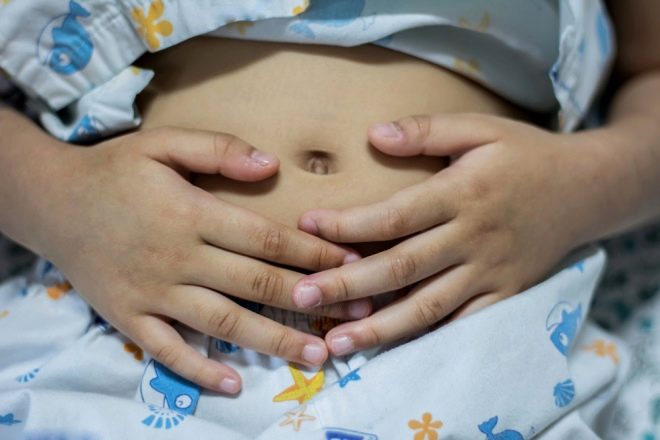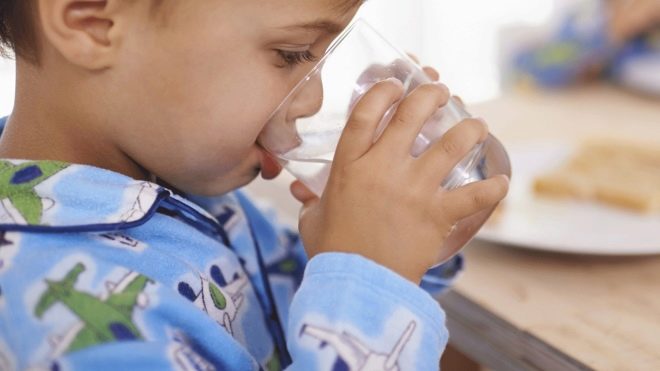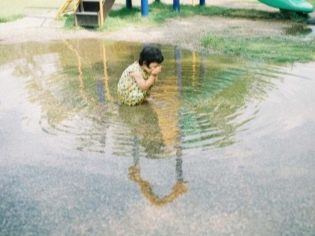Dysentery in a child: from symptoms to treatment
Intestinal infections in childhood occur frequently, and the task of parents and doctors is to be able to distinguish one infection from another, because not every diarrhea in a child is harmless. Dysentery is also a dangerous infection.
What it is?
Representatives of the older generation like to frighten children with dysentery, claiming that unwashed apples from the garden or dirty hands may well cause this dangerous disease. Is dysentery so common - a big and very important question.
In medicine, to refer to this disease, another term is used - shigellosis, derived from the name of the bacterium that causes the disease. This is a contagious infectious disease that occurs with a syndrome of general intoxication of the body and damage to the lower (distal) part of the intestine.
Those who call dysentery acute intestinal infection are not at all mistaken - the disease really belongs to this group. But, unlike other intestinal infections that affect everyone, dysentery is more common in children (up to 75% of people with shigellosis, according to WHO statistics, are children).
Children 2 years, 3 years and older have the highest susceptibility to the pathogen. After 7 years, the susceptibility decreases markedly. Up to 1 year, in infants, shigellosis is recorded very rarely. There is no gender preference for the causative agent - both boys and girls are equally affected.
The World Health Organization finds it difficult to calculate the exact number of people who became ill and have recovered, because in the world this ailment is widespread in children, and there is not always access to medical care and statistical data. There is evidence that every year on the planet with dysentery infects up to 90 million people, 700 thousand cases end in death. Most of the dead - young children (from 1 year to 3 years).
Causes
As already mentioned, the name "shigellosis" is not an accident, but an indication of the causative agent of the disease. Dysentery is caused by microbes belonging to the genus Shigella. This genus is quite large, it includes dozens of different bacteria. One thing unites them - all of them are enterobacteria, that is, they can multiply in the human gastrointestinal tract.
Dysentery is caused by four of the most prominent representatives of this group: Shigella dysenteriae, Shigella flexneri, Shigella sonnei and Shigella boydii, and also from fifty of their serotypes.
Shigella are Gram-negative bacteria - sticks. They are very hardy and live quietly in the environment. For example, in water and land can last up to three months, in food products - up to 30 days. They are not afraid of frost, do not die when dried. You can kill Shigella only by heating - if the temperature gets above 60 degrees, the microbes will die in half an hour, and at 100 degrees (the boiling point of water) the bacteria die in seconds.. They are quite easy to destroy with direct sunlight and popular disinfectant solutions.
Shigella multiply rapidly in the nutrient medium, and in the course of their life cycle, they emit a large amount of toxic substance that enters the child’s bloodstream and causes symptoms of intoxication. Shigella toxin species can produce several. The most common in Russia today are the Shigella Flexner (flexneri), as well as the Sonnei microbes.
Thus, dysentery is a bacterial infection and cannot be caused by anything else. The only source of pathogens is a sick person who is contagious from the first day of the disease.. The child cannot infect from such a patient by airborne droplets, the bacteria are not transmitted by air. There are only a few likely routes of transmission of microbes:
- contact and household;
- water;
- alimentary.
Shigella in large quantities are allocated to the feces of a sick person, even if he has an illness that occurs in erased form. A child can become infected if the pathogenic bacteria get into the hands, and from there into the mouth and food pathways.
How does this happen:
- while swimming in a pool or pond;
- while drinking water from natural sources: springs, wells, and also from a water supply system;
- while playing with sick children, while using the same items, dishes, linens;
- when eating food contaminated with a bacterium without proper heat treatment or with insufficient heat treatment (the temperature at which shigella dies is indicated above);
- when eating poorly washed or unwashed vegetables and fruits.
The lower the level of hygiene, the higher the likelihood of spread of dysentery, and the more people are crowded in the same room, the larger the consequences of the spread of bacteria can be.
Outbreaks of shigellosis are often observed during major accidents of water supply networks, sewage systems, cyclones and floods, and are usually infected with entire families, but in adults the disease can be hidden, while in children the symptoms start very brightly.
In Russia, the peak in the incidence of dysentery is summer and autumn, as well as the off-season. After the child has been ill, he has a short-term immunity to a certain type of shigella (with which his body has successfully coped), it lasts for several months, but after that it is quite possible to re-infection. Lifelong immunity does not exist.
Symptoms and signs
Since different types of bacteria of the genus Shigella produce their own endotoxins, the disease manifests itself in the case of infection with a certain type of microbe in different ways. Much depends not only on the type of microbe pathogen, but also on the immunity of a particular child, on his age, on the form of the severity of the infection, on how severely the gastrointestinal tract is affected.
With any pathogen of the above (Shigella dysenteriae, Shigella flexneri, Shigella sonnei and Shigella boydii) the incubation period sometimes lasts several hours, and sometimes several days. On average, it is two days. After this, the toxin in the body accumulates enough to make possible acute manifestations of the disease.
The child has a feeling of strong indisposition, the temperature rises in a matter of minutes, and can be both 37.7 and 40.0 degrees - This is quite an individual protective reaction of the body. The child has nausea, vomiting occurs (it may be a one-time, and repeated several times). In severe vomiting, repeated, severe, accompanied by rapid dehydration, convulsions, blue skin, heart rhythm disturbances, falling blood pressure, loss of consciousness and delirium.
With shigellosis children suffer from diarrhea. Diarrhea can be repeated from 5 to 25 times a day.. In the liquid stool there is a large amount of impurities of the unclear mucous substance, greens, and even blood streaks. Kala will be plenty on the first day, but on the second day of illness the child still often wants to go to the toilet for “great need”, but in fact, there is already nothing to go - the amount of feces is small, sometimes only a clot of mucus is secreted.
False urge to defecate can lead to dangerous complications of dysentery - prolapse of the rectal mucosa, gaping anus. In young children, the symptoms increase gradually.The younger the child, the higher the risk of complications from the lungs - pneumonia, and hearing organs - otitis. Sonne's disease, caused by the Shigella sonnei bacterium, is manifested with an erased clinical picture, and the mucous membranes of the distal part of the intestine are least affected. And with Flexner's disease, the symptoms are most severe.
A child's body, if there are no complications, takes about two weeks to cope with the disease. Full restoration of intestinal mucosa takes up to three months, provided that the child will follow the diet and follow all the recommendations of the doctor.
Sometimes dysentery is also chronic. In this case, intoxication is always insignificant, liquid stool does not have such painful symptoms and frequency. But the chronic form is dangerous because with time and without treatment it can lead to abnormal weight loss, anemia.
Do not confuse classical dysentery with amoebic, caused by the simplest microorganisms of the genus Entamoeba histolytica. It usually manifests as colitis.
How to diagnose?
If shigellosis is suspected, the pediatrician immediately isolates the child - clinical recommendations imply examination and treatment in an infectious diseases hospital. But suspicions are suspected, and a diagnosis of dysentery can only be made on the basis of laboratory tests.
Feces and vomit taken for bacteriological examination. Thus, the type and name of the pathogen is distinguished, and in the laboratory it is immediately possible to determine which particular bacterium is sensitive to the antibiotic, which will be of no small importance for the purpose of therapy.
Treatment
It is possible to treat shigellosis both in the hospital and at home. It all depends on the age of the patient, the severity of the disease. The younger the child, the higher the likelihood of dangerous complications associated with dehydration. Such children, like babies with severe manifestations of dysentery, are recommended to be treated in an infectious diseases hospital. Older children with mild forms of the disease can be treated at home.
For recovery, it is very important to comply with the regimen, adhere to the recommended clinical nutrition by the doctor. For the treatment must be prescribed antibacterial drugs - antibiotics. To remove the signs of intoxication with enterotoxins help means with a detoxification action. A little later, preparations are recommended for the correction of immunity, restoration of the mucous membrane of the distal part of the intestine, as well as for the normalization of the digestive processes in general.
While there is an acute period of illness, the child is recommended bed rest. - This will help his immunity mobilize. In the first three days after the onset of symptoms, it is recommended to feed the child in small portions - up to 8-9 times per day. Toddlers up to one year old are recommended fermented milk products saturated with useful lively intestinal flora, and children older than a year are recommended to make porridges cooked in water in a “mushy” type. Vegetable broths, jelly, cottage cheese, vegetable purees, subjected to heat treatment are not prohibited.
The more diarrhea and vomiting, the more warm the child should drink. In case of severe intoxication, it is recommended to drink the child with salt solutions (“Rehydron”, “Humana Electrolyte” and others).
If the child is small and can not drink the right amount to replenish the water-salt balance or refuses to drink, as well as with severe dehydration, water and mineral solutions are administered intravenously.
For abdominal pain on the first day recommend antispasmodic drugs based on drotaverine or papaverine. Do not use "papaverine" in the form of rectal suppositories - the anus and without the introduction of suppositories irritated.
Antibiotics for the destruction of the causative agent of the disease can be replaced at the discretion of the doctor with a dysenteric bacteriophage, they can be supplemented with antibiotics.What antibacterial drug to prescribe, the doctor decides, obtaining laboratory data on the type of bacteria and its sensitivity to antibiotics. Often prescribed "Supraks" and other drugs of the cephalosporin group, as well as "Ampicillin", "Furazolidone".
Giving the remedy for diarrhea with shigellosis is contraindicated. The liquid stool is a protective reaction of the organism, with it the intestine gets rid of bacteria and products of their decay and metabolism. If you stop the diarrhea, the recovery will be significantly delayed.
When the acute period is over, enzyme preparations are recommended for the child in addition to the diet. ("Pancreatin") to reduce the load on the pancreas and restore normal digestion. Probiotics and prebiotics are prescribed to normalize the intestinal flora. Also, the child is recommended to take vitamins and immunostimulants..
The fact that the child is healthy, says not only the improvement of his health and normalization of stool and digestion, but also the absence of bacteria in the fecal masses, for this bacteriological examination is repeated. Within a month, and sometimes even longer, the child remains in the dispensary register with the infectious diseases specialist in the children's clinic in the place of residence.
Prevention
Prevention of dysentery is divided into specific and nonspecific. The first is the vaccine for this disease.
Nonspecific prophylaxis includes a certain set of measures.
- Never forget that shigellosis is contagious. Keep others safe - If you or your child have dysentery, limit all contacts and use of common things.
- Maintain hygiene, teach your child from an early age to wash their hands after walking, before eating, after using the toilet, in crowded places, such as shops, hospitals, public transport. If there is no real chance to wash your hands for some reason, you should definitely use wet wipes with antibacterial impregnation. It is important to teach the child a good habit as early as possible not to put your hands in your mouth, especially when walking, on the street, away, in transport, or in a store.
- Keep your child eating only well-washed vegetables and fruits.. Fruits should be washed only under running water. You can use a special brush or peel the fruit before giving it to the child.
- Buy food, especially meat and milk, you need only in reliable and proven places, and not in the spontaneous markets or with hands "at the road".
- Keep your foods fresh in the fridge.. Label them if necessary. Compliance with an expiration date is an important condition for the prevention of any intestinal infection, and shigellosis is no exception.
- It is not necessary to feed the child with spring water, as well as water from dubious sources. Bottled water is optimal for baby food.
- If you plan to visit hot countries with low levels of sanitation and high population density (India, Brazil, Africa, etc.) Care should be taken to vaccinate yourself and the baby.
Graft
Vaccination against dysentery is not included in the National Schedule of Vaccinations. It can be done only on their own and, of course, at their own expense. For childhood vaccination there is an age limit - children up to three years old are not welcome..
In Russia, several types of vaccine are used - Shigellvak, Flexner's Vaccine, and Dysenteric Bacteriophage. They do not ensure that infection does not occur, but guarantee that if this happens, the disease will proceed more easily and without complications.
Who should think about vaccination:
- children who are going to spend a shift in a children's camp at sea;
- children who are going on a trip to Africa, Asia, to any exotic countries with a hot climate;
- children who live in a region that is currently experiencing an outbreak of dysentery.
Vaccination can be done in the vaccination room of any clinic or private clinic.Side effects, according to reviews, are rare, unpleasant effects of vaccination in children almost never occur.























